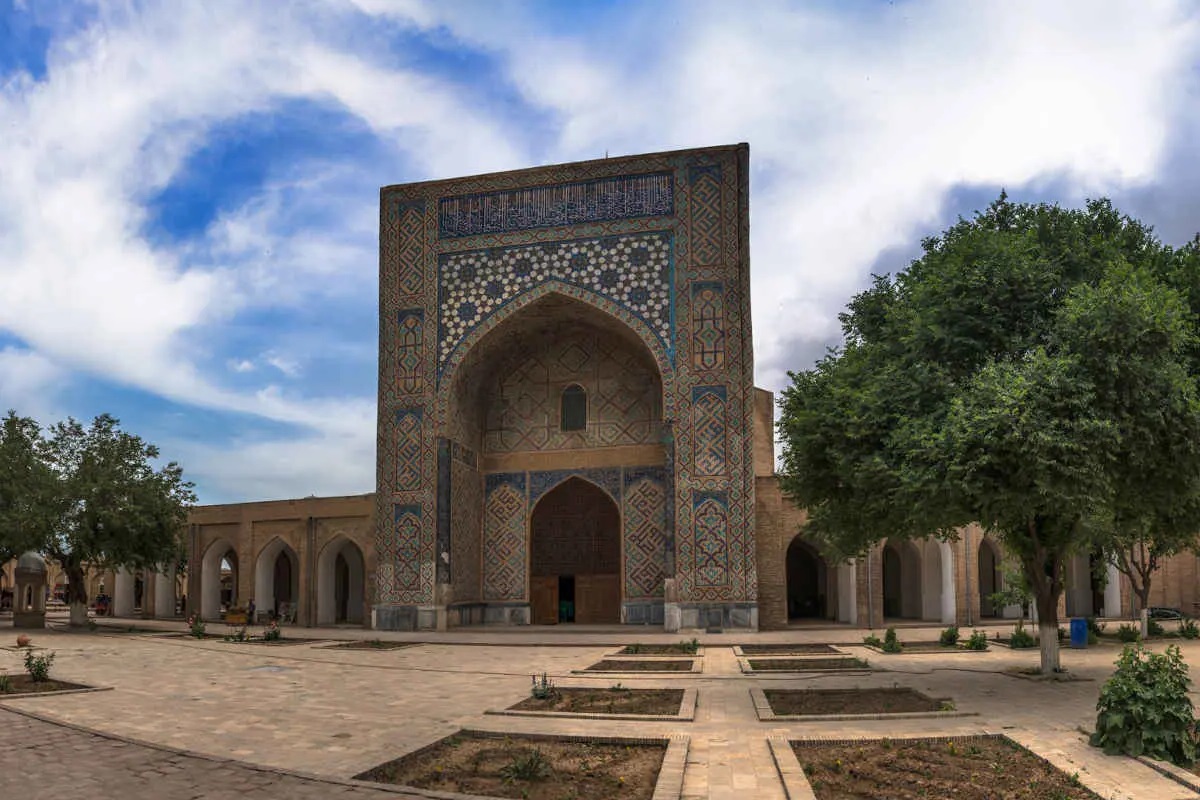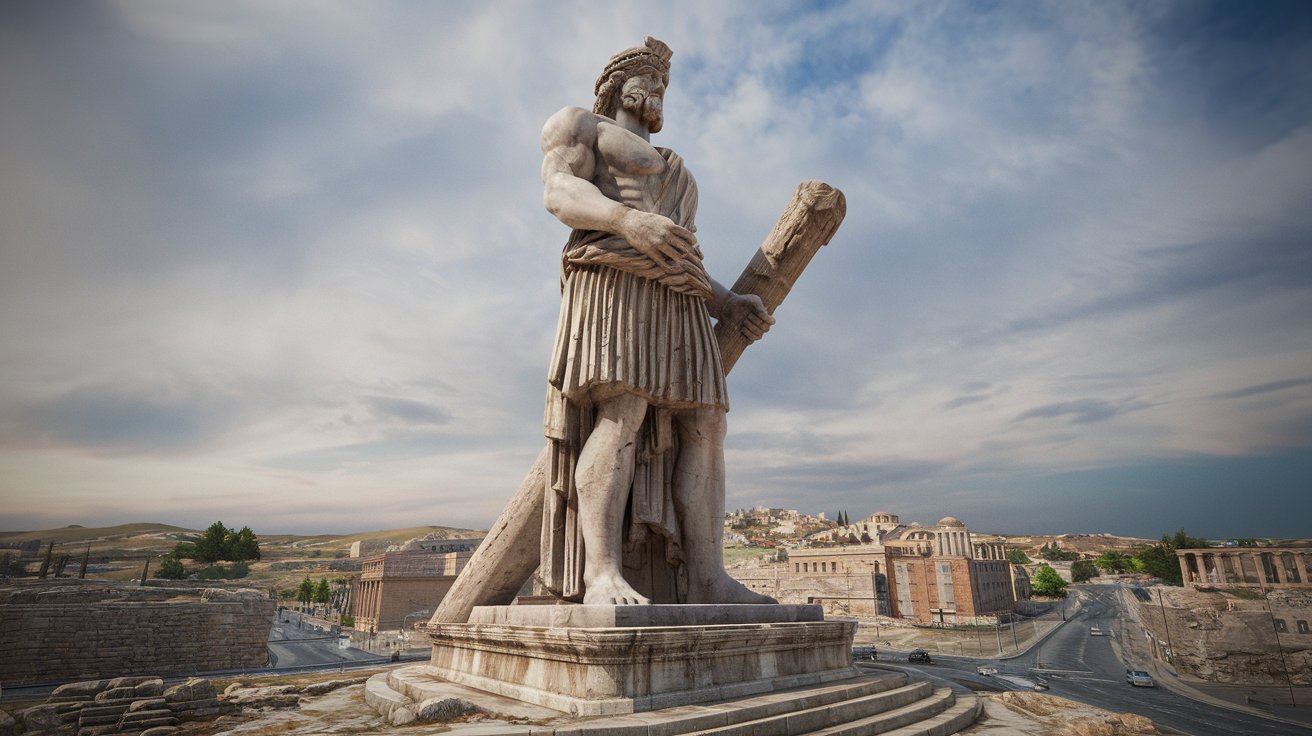
Kok Gumbaz Mosque is a stunning piece of architecture located in Shahrisabz, Uzbekistan. Built in 1437 by Ulugh Beg, the grandson of the famous conqueror Tamerlane, this mosque stands as a testament to the grandeur of Timurid architecture. The name "Kok Gumbaz" translates to "Blue Dome," which is fitting given its striking azure dome that dominates the skyline. Why is Kok Gumbaz Mosque so significant? It's not just the beauty of the structure but also its historical and cultural importance. The mosque served as a place of worship and a symbol of the Timurid dynasty's power. Its intricate tile work, grandiose design, and historical context make it a must-see for anyone interested in Islamic architecture or Central Asian history.
Key Takeaways:
- Kok Gumbaz Mosque: A Timurid Marvel Discover the grandeur of Timurid architecture at Kok Gumbaz Mosque, featuring a stunning blue dome and intricate tile work, influencing cultural and historical landscapes for centuries.
- Historical and Cultural Legacy Kok Gumbaz Mosque, a UNESCO World Heritage site, holds a rich historical significance, serving as a place of worship and pilgrimage, bridging the past and present in Uzbekistan.
Kok Gumbaz Mosque: A Glimpse into History
Kok Gumbaz Mosque, located in Shahrisabz, Uzbekistan, is a stunning example of Timurid architecture. Built in the 15th century, this mosque has a rich history and fascinating details that make it a must-visit for history buffs and architecture enthusiasts alike.
Architectural Marvels of Kok Gumbaz Mosque
The mosque's design and construction reflect the grandeur of the Timurid era. Here are some intriguing architectural facts about Kok Gumbaz Mosque:
- The mosque was commissioned by Ulugh Beg, the grandson of the famous conqueror Timur (Tamerlane).
- Its name, "Kok Gumbaz," translates to "Blue Dome," highlighting its striking blue-tiled dome.
- The mosque's dome measures 46 meters in diameter, making it one of the largest in Central Asia.
- The interior features intricate tile work and calligraphy, showcasing the artistry of Timurid craftsmen.
- The mosque's mihrab (prayer niche) is adorned with beautiful geometric patterns and floral motifs.
Historical Significance of Kok Gumbaz Mosque
Beyond its architectural beauty, Kok Gumbaz Mosque holds significant historical importance. Here are some key historical facts:
- The mosque was built in 1437, during the reign of Ulugh Beg, who was also a renowned astronomer and mathematician.
- It served as a congregational mosque for the city of Shahrisabz, playing a central role in the community's religious life.
- The mosque is part of a larger complex that includes the Dorut Tilavat ensemble, which also houses the mausoleum of Sheikh Shamsiddin Kulal, a revered Sufi saint.
- Ulugh Beg's father, Shah Rukh, is buried in the nearby Dorus Saodat complex, adding to the site's historical significance.
Cultural Impact of Kok Gumbaz Mosque
Kok Gumbaz Mosque has left a lasting impact on the cultural landscape of Uzbekistan. Here are some cultural facts:
- The mosque is a prime example of Timurid architecture, influencing subsequent architectural styles in the region.
- It has been a site of pilgrimage for centuries, attracting visitors from across the Islamic world.
- The mosque's design elements, such as its blue dome and intricate tile work, have inspired numerous other buildings in Central Asia.
- Kok Gumbaz Mosque is a UNESCO World Heritage site, recognized for its cultural and historical significance.
- The mosque continues to be a place of worship and a symbol of Shahrisabz's rich heritage, bridging the past and present.
Kok Gumbaz Mosque stands as a testament to the architectural brilliance and cultural richness of the Timurid era. Its historical and cultural significance make it a fascinating subject for anyone interested in the history of Central Asia.
Final Glimpse at Kok Gumbaz Mosque
Kok Gumbaz Mosque stands as a testament to the rich history and architectural brilliance of the Timurid era. Built by Ulugh Beg in 1437, this mosque showcases stunning blue domes and intricate tile work that captivate visitors. The mosque's name, meaning "Blue Dome," perfectly describes its most striking feature. Its spacious prayer hall and serene courtyard offer a peaceful retreat for worshippers and tourists alike. The mosque's historical significance and beauty make it a must-visit site in Shahrisabz, Uzbekistan. Whether you're a history buff, architecture enthusiast, or simply curious, Kok Gumbaz Mosque offers a glimpse into the past and a chance to appreciate the artistry of a bygone era. Don't miss out on experiencing this architectural gem that continues to inspire awe and admiration.
Frequently Asked Questions
Was this page helpful?
Our commitment to delivering trustworthy and engaging content is at the heart of what we do. Each fact on our site is contributed by real users like you, bringing a wealth of diverse insights and information. To ensure the highest standards of accuracy and reliability, our dedicated editors meticulously review each submission. This process guarantees that the facts we share are not only fascinating but also credible. Trust in our commitment to quality and authenticity as you explore and learn with us.


